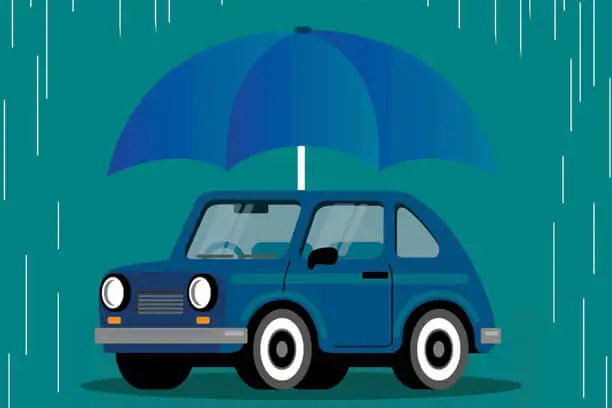From hurricanes and tornadoes to hail, floods and windstorms, severe weather can strike at any time. Even though you can’t control Mother Nature, you can protect your vehicle from potential harm. Here are our top tips for how to prevent damage to your car, no matter what type of weather you’re in.
All Seasons: Keep the Rain at Bay
- Seal up Openings: Heavy rainfall can wreak havoc on your car. Prevent water from getting inside by sealing up any openings in your vehicle. Make sure windows and sunroofs are closed tight and check rubber linings on doors. If they are dried and cracked, replace them.
- Inspect Your Car: Before and after a storm, closely examine your car and take detailed photos. That way you’ll have a visual record of what your vehicle looked like before and after it sustained storm damage. These images will come in handy if you have to file an insurance claim.
- Drive With Caution: If you must operate a vehicle during a storm, proceed with caution. Stay away from fallen power lines and wooded areas where winds can move tree branches at high speeds.
Winter: Prep for the Cold
- Test Tire Pressure: If you’re expecting extreme cold temperatures or a blizzard, double-check your tire pressure to ensure it’s at optimum levels. When cold weather hits, tire pressure drops and can cause safety issues for your vehicle.
- Seek Shelter: For your vehicle, that is. If you’re wondering where to park your car during a storm, a garage is the best option. It provides safety from most damage caused by rain, hail or high winds. To protect an uncovered car from hail or high winds, move it into a carport or park it against the side of a house or building where it will get some protection from power lines and tree branches. If parked in a garage, cover the vehicle with a heavy moving blanket; if parked outside, use a fitted canvas car cover.
Spring: Be Prepared for Unpredictable Weather
- Safeguard Your Windshield: Wondering how to protect your windshield from hail? If you can’t get your vehicle into covered parking, use your vehicle’s floor mats. Place them on the windshield, roof or hood, rubber side down.
- Check the Forecast: Spring’s unpredictable weather patterns can leave your car vulnerable to damage. Keep an eye out for any incoming storms or weather events — and don’t forget to roll the windows up, even if it’s been sunny all day. For your safety, keep close tabs on local news and the National Weather Service for storm updates and evacuation protocols.
Summer: Practice Sun Safety
- Protect Your Battery: High temperatures can evaporate your battery's vital liquids, weaken its charge and speed up the corrosion process. Protect your car’s battery from heat by limiting short car trips, not using lights or electronics when the car is turned off and ensuring that both the battery and its posts are clean, since dirt can become a conductor.
- Keep Your Car Looking New: Over time, the sun can fade fabric seats, damage leather and even warp plastic trims. A good car wax can shield your paint from cracking and peeling due to heat damage, and interior seat covers will prevent leather damage.
Fall: Prevent Flood Damage
- Stay Out of Harm’s Way: Avoid low-lying areas, coastal roads and desert washes where flash flooding can occur. Never drive through flooded roads, which can damage your vehicle’s engine. As little as six inches of standing water is enough to flood the exhaust. Fast-moving water at only a foot high is powerful enough to carry your vehicle away.
- Call Your Agent: A flood-damaged car can be a serious issue. Your FBFS agent will be able to help you determine the impact and the best way to move forward. You should be prepared to provide as much information as you can about the condition of your vehicle.
Check Your Insurance
Make sure your car insurance covers storm damage, specifically from hail or water. If your insurance doesn’t include storm damage, or if you aren’t sure, talk to your Farm Bureau agent to discuss your options. Ask about coverage for rental vehicles, too. In case your car does suffer damage, it’s helpful to have coverage that pays for a loaner vehicle while yours is being repaired.

